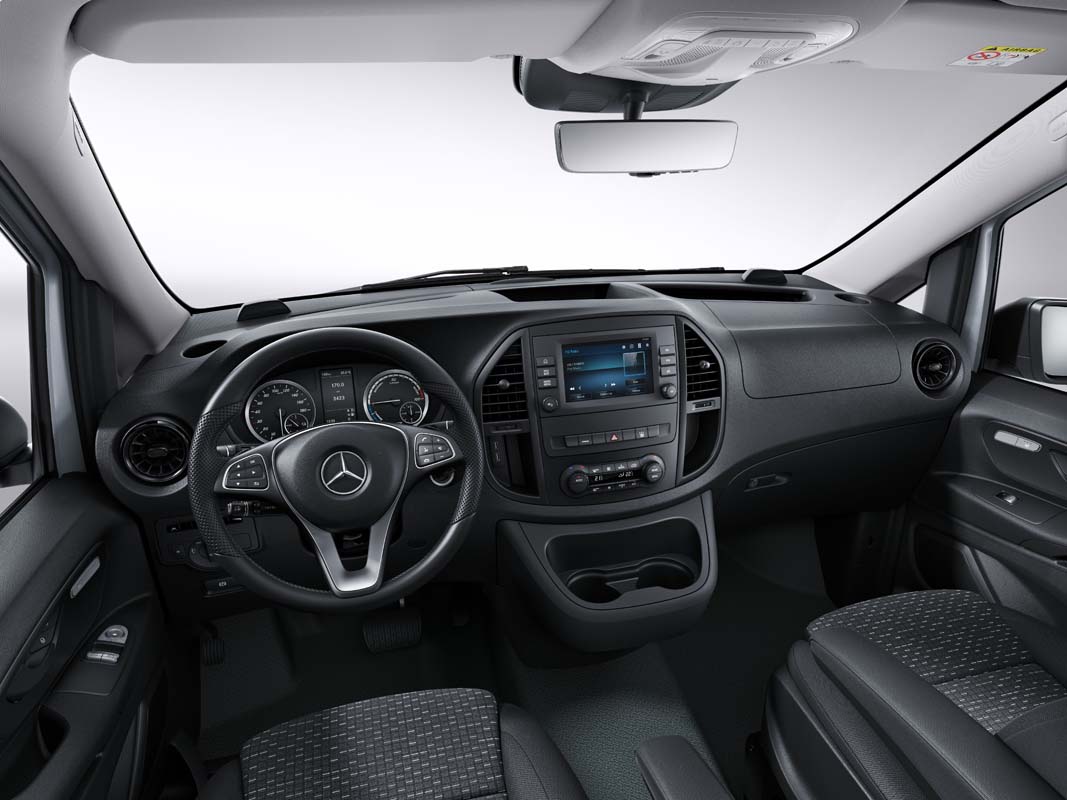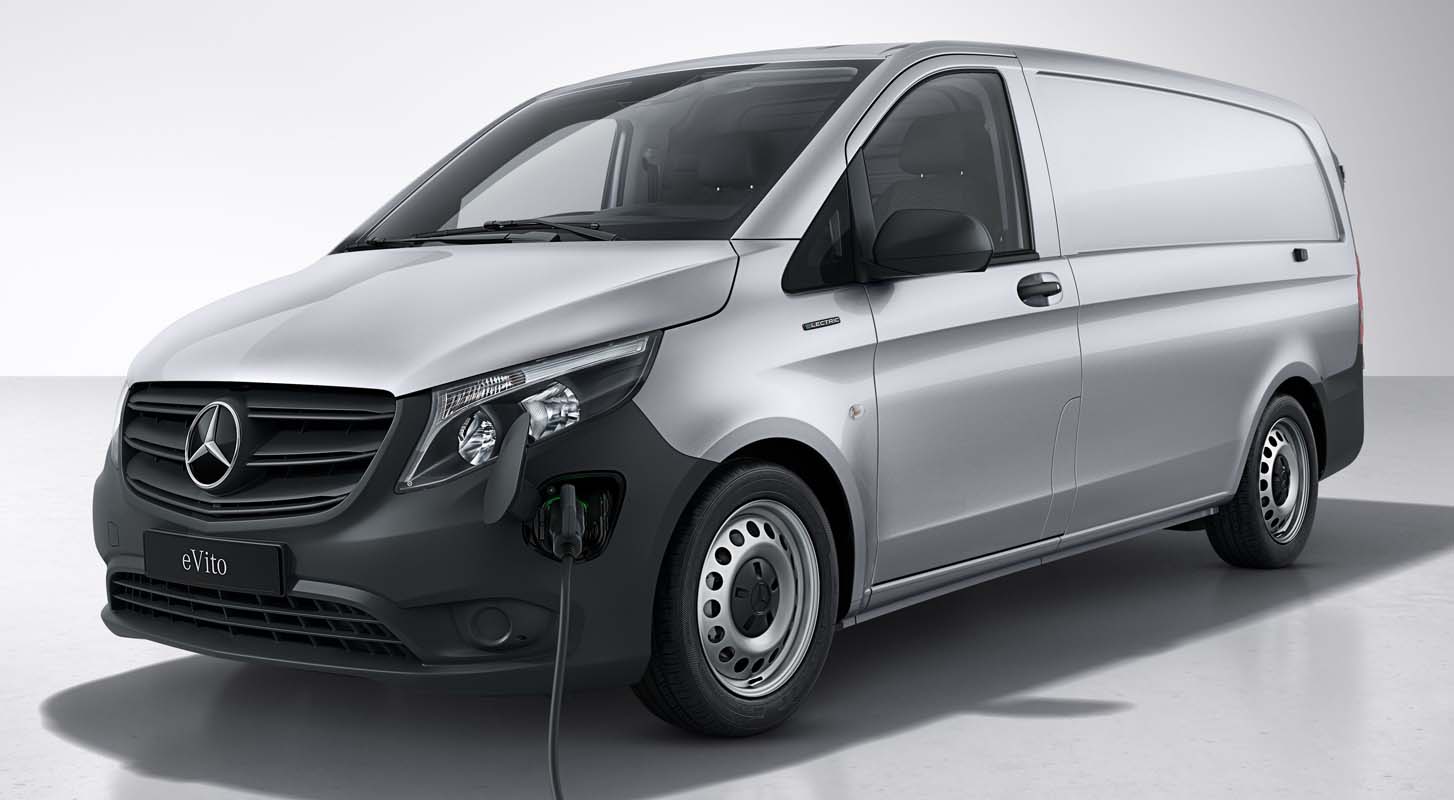
Following in the footsteps of the Mercedes‑Benz eVito Tourer, the eVito panel van will also receive a comprehensive update of the electric powertrain and a new battery with an usable capacity of 60 kWh from the beginning of December. The locally emission-free van replaces the model successfully launched on the market in 2018 and, with its significantly higher range of 242-314 kilometres (WLTP)1,2, appeals to a wider range of users in commercial freight transport.
“I’m delighted that with the new Mercedes‑Benz eVito panel van we are opening up commercial electric mobility for even more use cases and, thanks to the longer range, are also offering a solution for suburban and rural areas,” says Klaus Rehkugler, Vice-President Sales & Marketing Mercedes‑Benz Vans at the start of sales of the new eVito. “Looking at its equipment specification, attractive leasing rates and available public subsidies, the eVito is on par with a conventionally powered Vito in terms of TCO in many use cases. This is an important aspect, especially for businesses focussing on trade and craftsmanship or fleet managers, and once again makes it clear that electric mobility is now absolutely suitable for everyday use.”
Faster charging – longer range
The new Mercedes‑Benz eVito differs from its predecessor in many respects, while at the same time retaining the proven features of the battery-electric panel van.
Under the front end, there is still the electric powertrain which drives the front wheels with a peak power of 85 kW. The Mercedes‑Benz eVito panel van has a water-cooled AC on-board charger with a charging capacity of max. 11 kW. This means that it is prepared for alternating current (AC) charging, for example at commercial sites, at depots or at public charging stations. The new model is charged via the CCS charging socket in the front left bumper. This also makes fast charging by means of direct current (DC) possible. Thanks to a standard charging power of a maximum of 50 kW[3] or optionally a maximum of 80 kW3, the eVito can be charged from 10 to 80% at a DC fast charging station in about 50 or 35 minutes. The battery with a usable capacity of 60 kWh allows a range of 242‑314 kilometers (WLTP) 1,2.
In the new model, the eVito panel van now also offers various recuperation levels to charge its battery while driving by means of an intelligent operating strategy. The driver can change the strength of the recuperation via shift paddles behind the steering wheel as required. A particularly efficient and comfortable driving style is offered by the DAUTO recuperation stage. According to the maxim “driving with foresight and saving energy”, information from the safety assistants is networked and the strength of the recuperation is adapted to the situation and in real time. In addition, three drive programs help the customer to choose between maximum comfort and maximum range individually and at the push of a button while driving.
By housing the battery in the vehicle underfloor, the interior is fully available and offers up to 6.6 m³ of loading volume – an important prerequisite for numerous industries, especially in freight transport. The locally emission-free van can be ordered in two different lengths: Once with a total length of 5,140 millimetres and as an extra-long version, which comes to 5,370 millimetres.
As practical as with conventional drive with often comparable TCO and attractive conveying options
The new eVito panel van, similar to the eVito Tourer, already includes many attractive features as a production vehicle, such as 17-inch wheels, heated seats for the driver, the multifunction steering wheel with travel computer or DC charging with up to 50 kW. Numerous safety and assistance systems such as Active Brake Assist, ATTENTION ASSIST and Headlight Assist are also included as standard.
Technical data of the Mercedes‑Benz eVito panel van
| CO2 emissions | 0 g/km |
| Electrical consumption (combined)(WLTP) [4] [5] | 27,2-21,3 kWh/100 km |
| Electrical range (combined) (WLTP)1,2 | 242-314 km |
| Min. charging time at a wallbox or at a public charging station (AC charging, max. 11 kW) | < 6.5 h (0-100 %) |
| Min. charging time at a fast-charging station DC charging, max. 50 kW, standard3 DC charging, max. 80 kW, option3 |
approx. 50 min (10-80 %)4 approx. 35 min (10-80 %)4 |
| Drive system | Front-wheel drive |
| Output (peak) | 85 kW (116 hp) |
| Output (steady) | 70 kW (95 hp) |
| Max. torque | Up to 360 Nm |
| High-voltage battery | Lithium-ion |
| Battery capacity (usable) | 60 kWh |
| Battery capacity (installed) | 66 kWh |
| Lengths | 5140 mm, 5370 mm |
| Load capacity | Long: 6.0 m³, Extra-long: 6.6 m³ |
| Max. payload | Long: 888 kg, Extra-long: 853 kg |
| Speed limitation | 80 km/h (standard), 100 & 120 km/h (option) |
| GVW | 3,200 kilogrammes |
[1] The range was determined on the basis of Directive 2017/1151/EU.
[2] The actual range is also dependent on the individual driving style, road and traffic conditions, the outside temperature, as well as whether the air conditioning system/heating are in use, and may therefore differ.
[3] Maximum charging capacity at a DC charging station with a 400 volt supply, 300 A current; the maximum charging output depends on various factors, such as ambient and battery temperature as well as the state of charge of the battery when charging is started.
[4] Electrical consumption was determined on the basis of Directive 2017/1151/EU.
[5] Further information on the official fuel consumption and the official, specific CO2 emissions for new passenger cars can be found in the publication “Leitfaden über den Kraftstoffverbrauch, die CO2-Emissionen und den Stromverbrauch neuer Personenkraftwagen” [“Guidelines concerning the fuel consumption, CO2 emissions and electricity consumption of new passenger cars”], available free of charge from all showrooms and from the Deutsche Automobil Treuhand GmbH (www.dat.de).

